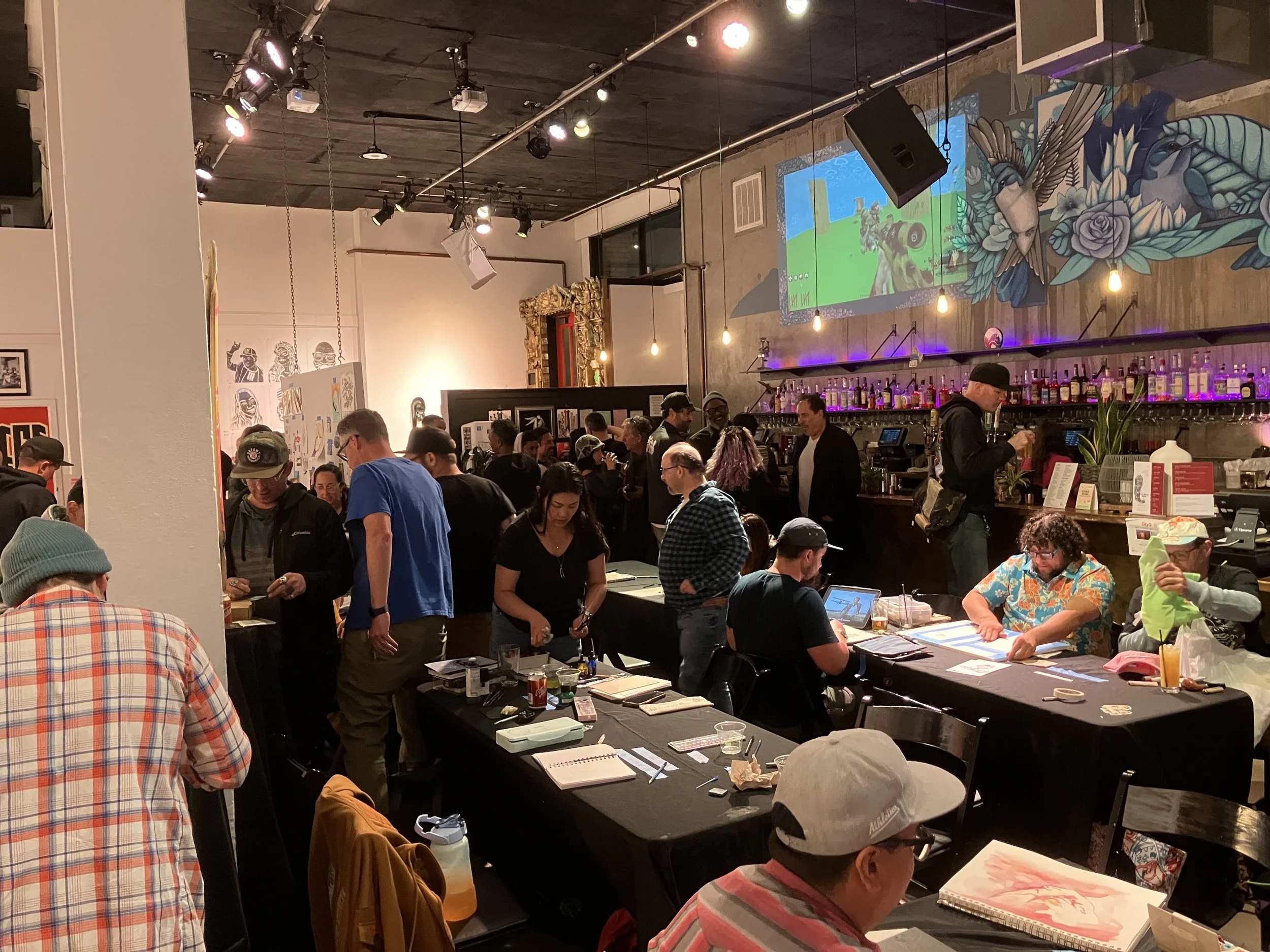Featured Artists: Aaron Johnson, Abel Manalo, Adam Caldwell, Adam McCarthy, Alberto Ybarra, Alec Huxley, Alex Achaval, Alice Koswara, Amanda Lynn, Amber Allen, Amy Ahlstrom, Analy Nakat, Andrew MacRae, Antonio Pelayo, Brady Wilmott, Brandon Hurley, Brent McHugh, Brett Armory, Brian Barneclo, Brian J Hoffman, Cat Sommer, Charmaine Olivia, Chonto, Chor Boogie, Chelsea Robot, Chris Granillo, Chris Leib, Chris Stokes, Cindy Shih, Cleng Sumagaysay, Daryll Peirce, D Young V, Debra Dee, Debra Shapiro, Delphyne, Dom Fontana, Doug Rhodes, Eddie Colla, Eddie O. Rodriguez, Emily Fromm, Germs Zacarias, HiERICBRO, Espana Garcia, Fabez, Felicia Ann, Felicia Gabaldon, Isaac Pelayo, J.L. King, Jeffrey Nemenzo, Jessica Petrie, John Osgood, John Wentz, Johnny Dismal, Jon Ching, Jose Di Gregorio, Josh Everhorn, Josh Thurman, Joshua Nissen King, Kenneth Malone, Kevin Earl Taylor, Kirstine Reiner Hansen, Lacey Bryant, LJ Kim, Lady Henze, Lana Kohn, Laura Gonzalez, Lee Harvey Roswell, Leija, Leon Loucheur, Linda Larson, Liz Brizzi, Lucas Bononi, Luciano Roque, Marina Berlin, Mario Navasero, Mark Campbell, Mars-1, Mars Sandoval, Masha Ko, Maureen Shields, Max Ehrman (Eon75), Micah LeBRUN, Michael Murphy, Michael Walsh, Mike Davis, Mollie Tuggle, Monty Guy, Natalie Gabriel, Nate Geare, Nicole Hayden, Olympia Altimir Galvez, Optimist, Paul Lewin, Phillip Hua, Phillip Lawson, Pablo Ruiz Arroyo, Ransom and Mitchell, Raul D’Mauries, Ricky Watts, Rob “Pengoo” Casanovas, Robert Bowen, Romanowski, Ryan Stubbs, Sean Faithen, Sofia Venegas, Steve Javiel, Tanya Herrera, Ted Vasin, Julia, Tomo77, Txutxo Perez, Ursula Xanthe Young, Ximena Rendon, Yanoe Zoueh, Yuri









